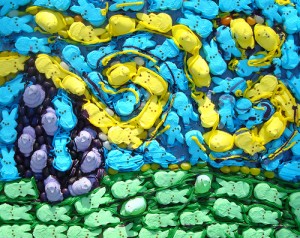Comment on this post to be entered to win a $20 School Box gift card. Winners are drawn each month!
This springtime activity is perfect for the classroom or the kitchen table! It incorporates a poem and a craft…and could even be a great Mother’s Day gift.
Read A Poem
“Daffodowndilly” by A. A. Milne
She wore her yellow sun-bonnet,
She wore her greenest gown;
She turned to the south wind
And curtsied up and down.
She turned to the sunlight
And shook her yellow head,
And whispered to her neighbour;
‘Winter is dead.’
Create a Craft

Photo of daffodil craft from http://www.dltk-teach.com.
This wonderful craft idea came from DLTK’s Educational Activities website: www.dltk-teach.com.
Materials for each Daffodil:
– a cardboard egg carton cup
– yellow paint
– glue/tape
– green construction paper (or a green straw)
– yellow and green cardstock paper (or use white and allow your students to color or paint the pieces)
Procedure:
• Cut out the flower shaped piece and two leaf-shaped pieces from the yellow and green (or white) cardstock paper. You may want to do this part beforehand for your students, depending on their age.
• Color/paint the pieces, if you chose to use white paper.
• Roll a sheet of green construction paper as tight as you can to make a tube, then glue/tape it so that it stays together (or you can just use a green straw).
• Flatten the tube a little.
• Glue/tape the leaf pieces to the flat part of the tube, somewhere in the middle of the tube.
• Glue/tape the flower piece to the top of the tube.
• Trim the edges of your carton cup if it is jagged.
• Paint the carton cup yellow, including the inside! (You can use styrofoam if you don’t have cardboard, but you will just have to leave it white since the paint doesn’t stay very well on styrofoam.)
• Glue the egg carton to the center of the flower piece.
After making sure everyone has their name on their daffodil, you may want to put all of them in a large vase for display in the classroom!
Extra facts you may want to share with your students…
Did You Know?
- The first day of spring is special because daylight and darkness both last for 12 hours.
- Spring is a time when we have many flower festivals here in the United States. In fact, Washington, D.C. has a yearly Cherry Blossom Festival when visitors come to see flowers and enjoy our beautiful capital. You could also research local flower festivals in your town or state on www.topeventsusa.com.
Kelli Lewis is graduate student at the University of Georgia and a regular contributor to A Learning Experience.

















